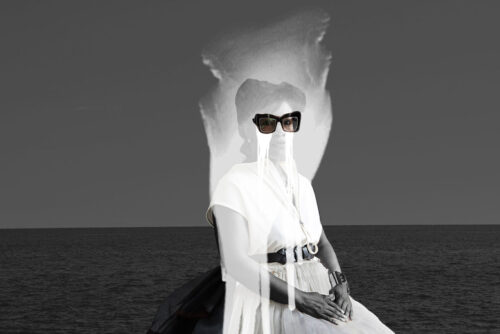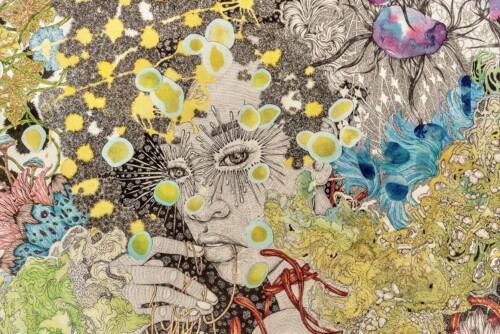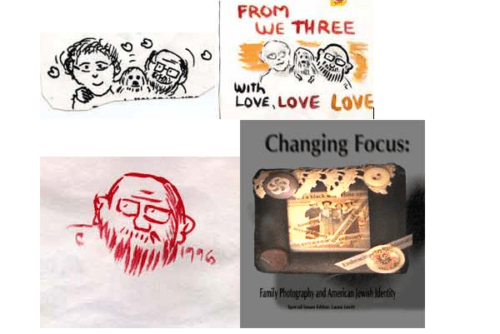“In feathers, in bananas, in her own skin, intelligent body attached to a gaze. Stripped down model, posing for a savage art, brought color to a primitive stage.”
—Harryette Mullen, Trimmings, 1991
Perhaps those inclined to gather for an international conference to celebrate and analyze Josephine Baker were among the only observers in the television or Internet audiences unsurprised, if intrigued, by Beyoncé Knowles’s1 recent evocations of and tributes to Baker. A preview of the banana dance that the pop star would perform on CBS’s presentation of Fashion Rocks2 came on September 7, 2006, when Beyoncé appeared on Good Morning America.3 Beyoncé sat for an interview with Diane Sawyer in order to promote her new record B’Day, during which she curiously, remarkably, announced her affinities with Baker. The segment alternated tightly between sequences of images from Beyoncé’s coming-up years, accompanied by Sawyer’s voice-over, and sequences of the one-on-one sit-down between the two media figures.4 It also included clips of black-and-white footage featuring Baker dancing. Via references to Baker in the interview, Beyoncé presents herself as a woman coming into her own who is ready to defend herself or make an attack, as suggested by the militaristic tone in the album title’s rhyme with “D-Day.” Beyoncé also appeared to me as a performer claiming a history of audacious black female creativity, exemplified—we’d all agree—by Baker, the original Diva.
The singer had recently celebrated her 25th birthday, on which she debuted songs from the album in a live concert in Asia. Sawyer and Beyoncé’s conversation centered on this year as a turning point in Beyoncé’s life, but it also marked a professional transition because she recorded B’Day independently. The new album, then, stands for Beyoncé’s independence in significant ways. One is how she recorded B’Day on her own, without, she said, the knowledge of or input from her usual management. Further, Beyoncé seemed to be seeking a renewed sense of self-direction following her work as the character Deena in the film Dreamgirls (Bill Condon, 2006), which required her to undergo a strict dietary regime. She said of her weight loss, “I didn’t feel like myself. And this album was my release. That’s why it’s [the tone of the album] so aggressive. Because I had been in Deena’s body or Deena had been in me for so long that I had all these emotions that I, in my life, don’t—didn’t—feel.” Returning to Sawyer’s narrative of the album’s back-story, the host explains that Beyoncé “fused that fire into her music, recording B’Day in a secret studio session far away from her record label and manager father.” How this story-within-a-story format functions in Beyoncé’s promotional appearance will be addressed partially below, while considering the greater question of what it means for Beyoncé to evoke Baker at this juncture in her career will be my main task.
Beyoncé was nuanced and explicit in her statements about Baker in the GMA interview. She told Sawyer what qualities in Baker inspired her, saying, “I wanted to be more like Josephine Baker [than perhaps like Deena, who is a more repressed character], because she didn’t—she seemed like she was just possessed and it seemed like she just danced from her heart, and everything was so free. … This record sounds like a woman possessed. It sounds like a woman that is kind of desperate, and I wanted it [the album] to come from the soul. I just did whatever happened there [in the studio].”5 Thus, Beyoncé describes her own liberated feelings in terms of the paradoxical notion of possession as freedom. Possession suggests total consumption by something outside the self, a kind of imprisonment and lack of power, yet it implies its opposite as well: self-absorption that transcends or otherwise violates established conventions, whether social or personal. Possession is a kind of abandonment. Beyoncé’s word choice—possession—acknowledges her power while also potentially disavowing it: the music came; she did not make it, nor does she claim to control it. Yet, what dominates here is a sense of freedom and self-possession. Beyoncé sought to capture Baker’s dance practice, which is characterized by total movement, a sense of possession (see the music-hall party sequence in Princess Tam Tam) and unpredictability, controlled with her own bodily intelligence. Therefore, while promoting her new album on GMA, Beyoncé delivered her conceptual association with Baker’s aesthetics, central to which for her is this idea of possession or self-possession.
In her performance on Fashion Rocks [watch the video on youtube.com], Beyoncé delivered a literal Baker sampling. When the sequence opens, a projected drawing of Baker in the banana skirt is visible as the camera floats over the audience toward the stage. Beyoncé’s name in huge gothic script set in clouds follows. The stage fills with smoke. Beyoncé enters the scene, thrusting her hips with her arms high above her head, wearing a version of Baker’s banana skirt. In the opening moments of the Fashion Rocks dance, Beyoncé performs a direct quotation of Baker’s famous banana dance, which is accessible through film footage. The historical reference contextualizes Beyoncé’s erotic dancing, which includes thrusting her derriere powerfully and circling her hips slowly while she tosses her hair and, adding a comic touch, clicks her neck from side to side. After a segment where she dances and sings with the clouds covering her waist, she stands to dance, and screens behind her rise to reveal a well-known image of Baker’s face.
- Subsequent discussion of Beyoncé Knowles in this paper will use her first name only, which seems to be the conventional way of referring to the pop star. [↩]
- Last accessed May 30, 2007. http://www.youtube.com/watch?v=8JEvqcqBxx8. [↩]
- Baker’s dancing in the music video Déjà vu is also evocative of Baker’s signature multiplicity and disjuncture while quoting many of Baker’s movements. Last accessed May 30, 2007. http://www.youtube.com/watch?v=5QmHqKml51k. [↩]
- A fuller discussion of Sawyer’s role as a white woman representing the curiosities of the female majority in the news magazine’s audience is beyond the scope of this paper, but it suffices to say that she is meant to be an intermediary figure representing conservative values that balance curiosity, cravings for novelty, and a reluctance to abandon the safety of traditional models of decorum. The talk-show host’s role is to maintain the balance of freakishness and normality, between celebrity and anonymity, by performing the journalist’s role of the objective-yet-sympathetic interrogator/representative. Sawyer is like a supportive aunt whose rebellious niece mirrors her own youthful rebellions. In so doing, Beyoncé’s “possession” and “aggressive” singing and dancing style is contained as a right of passage rather than an oppositional aesthetics. [↩]
- “Beyoncé: Music’s New Dreamgirl.” Last accessed May 30, 2007. http://abcnews.go.com/search?searchtext=beyonce%20baker&type=. [↩]




